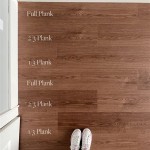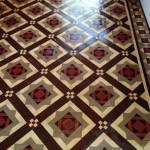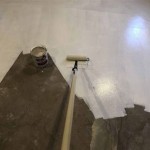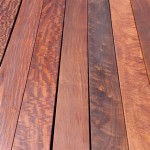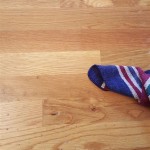What To Use To Get Paint Off Of Hardwood Floors
Discovering paint splatters on hardwood floors can be a frustrating experience, whether the result of a DIY project gone awry or remnants from a previous homeowner. Successfully removing paint requires careful consideration of the paint type, the finish of the floor, and the potential for damage. Choosing the correct method and materials is crucial to effectively eliminating the paint without harming the underlying wood.
This article will provide a comprehensive guide to the tools, techniques, and products suitable for removing paint from hardwood floors. This information is intended to equip individuals with the knowledge necessary to approach this task with confidence and achieve satisfactory results. The efficacy of each method can vary depending on the specific circumstances, therefore, it is recommended to test any solution in an inconspicuous area before applying it to the entire affected surface.
Identifying The Paint Type and Floor Finish
Before attempting to remove any paint, it is essential to identify the type of paint and the finish of the hardwood floor. Different paint types, such as latex, oil-based, or acrylic, respond differently to solvents and removal methods. Similarly, the floor’s finish, whether it’s polyurethane, varnish, or wax, dictates which chemicals and techniques are safe to use. The wrong approach can lead to damage, discoloration, or the removal of the floor’s protective layer.
Latex paint, being water-based, is generally easier to remove than oil-based or acrylic paints. Warm water and mild soap are often sufficient for softening and lifting latex paint. Oil-based and acrylic paints, on the other hand, require stronger solvents to break down their chemical bonds. These solvents need to be carefully selected to avoid damaging the hardwood floor's finish.
Determining the floor's finish is equally important. Polyurethane finishes are relatively durable and can withstand more aggressive cleaning methods. Varnish finishes are more vulnerable to damage and require gentler techniques. Wax finishes are highly susceptible to solvents and heat and require specialized cleaning products formulated for wax-coated surfaces.
A simple test can help determine the type of paint. Dip a cotton swab in rubbing alcohol and gently rub it on the paint. If the paint begins to dissolve or comes off easily, it is likely latex paint. If the paint remains intact, it is probably oil-based or acrylic. Similarly, a small test area with mineral spirits can help determine the floor finish. If the finish becomes sticky or dull, it indicates that the floor has a varnish or wax finish.
Effective Methods for Removing Paint
Several methods can be employed to remove paint from hardwood floors, each with its advantages and disadvantages. The choice of method depends on the paint type, floor finish, and the size and location of the paint splatters. The following are some of the most common and effective techniques:
Warm Water and Soap: This is the gentlest method and is most effective for fresh latex paint spills. Mix a mild dish soap with warm water and apply it to the paint splatter. Allow the soapy water to soak for a few minutes to soften the paint. Gently scrub the area with a soft cloth or sponge. Avoid using abrasive scrub brushes, as they can scratch the floor's finish. Rinse the area with clean water and dry thoroughly. Repeat the process if necessary. This method is suitable for floors with any type of finish, but it's crucial to avoid prolonged exposure to water, which can damage the wood.
Plastic Scraper: A plastic scraper is an essential tool for removing paint from hardwood floors. Its advantage lies in its ability to lift the paint without scratching the underlying surface. This method is especially effective for dried latex paint and can be used in conjunction with warm water and soap or other solvents. Hold the scraper at a slight angle and gently push it under the edge of the paint splatter. Apply steady pressure to lift the paint, being careful not to gouge or scratch the floor. For stubborn paint, apply a small amount of warm water or solvent to soften it before scraping. Clean the scraper frequently to prevent transferring paint back onto the floor. This method is suitable for all floor finishes, but extra care is needed on softer finishes like wax or varnish.
Mineral Spirits: Mineral spirits are a mild solvent effective for removing oil-based and acrylic paints. Before using mineral spirits, ensure adequate ventilation by opening windows and wearing gloves and a respirator. Apply a small amount of mineral spirits to a clean cloth and gently dab the paint splatter. Allow the solvent to dwell for a few minutes to soften the paint. Wipe the area with a clean cloth, removing the softened paint. Repeat the process if necessary. After removing the paint, clean the area with a damp cloth and dry thoroughly. Mineral spirits can be harsh on some finishes, so always test in an inconspicuous area first. Avoid using mineral spirits on wax finishes, as it can dissolve the wax and leave a dull spot.
Paint Removers: Commercial paint removers are available in various formulations, designed to dissolve and lift paint from surfaces. These products are typically stronger than mineral spirits and should be used with caution. Read and follow the manufacturer's instructions carefully. Apply the paint remover to the affected area, allowing it to dwell for the recommended time. Use a plastic scraper to remove the softened paint. Clean the area thoroughly with water or a solvent recommended by the paint remover manufacturer. Paint removers can be very aggressive and may damage the floor's finish. Always test in an inconspicuous area first and consider the potential impact on the floor finish.
Heat Gun: A heat gun can be used to soften paint, making it easier to scrape off. This method is most effective for thick layers of paint but requires careful technique to avoid scorching the wood. Hold the heat gun several inches away from the paint, moving it back and forth to evenly heat the surface. Do not focus the heat on one spot for too long, as this can damage the wood. Once the paint is softened, use a plastic scraper to lift it. Work in small sections and be careful not to scratch the floor. After removing the paint, clean the area with a damp cloth and dry thoroughly. This method is not recommended for floors with wax finishes, as the heat can melt the wax and cause it to spread. Use caution when using heat guns.
Vinegar: Distilled white vinegar can be a surprisingly effective and natural cleaning agent for removing paint splatters, especially latex paint. Heat the vinegar in a microwave or on the stovetop until it is warm, but not boiling. Soak a cloth or sponge in the warm vinegar and apply it to the paint. Allow the vinegar to sit for several minutes to help soften the paint. Gently scrub the area with a soft brush or cloth. The acetic acid in vinegar helps break down the paint without damaging most floor finishes. After removing the paint, rinse the area with clean water and dry thoroughly.
Baking Soda Paste: Baking soda is a mild abrasive that can help lift stubborn paint stains without being too harsh on the floor’s finish. Mix baking soda with water to form a thick paste. Apply the paste to the paint splatter and let it sit for approximately 15-20 minutes. Gently scrub the area with a soft brush or cloth, working in a circular motion. Rinse the area with clean water and dry thoroughly. Baking soda is particularly useful for removing paint from textured surfaces or grout lines.
Safety Precautions and Best Practices
When removing paint from hardwood floors, safety should be paramount. Many of the solvents and techniques used can pose health risks if not handled properly. Always wear appropriate personal protective equipment, including gloves, safety glasses, and a respirator, especially when working with solvents or paint removers. Ensure adequate ventilation by opening windows and doors or using a fan to circulate air. If working with a heat gun, be careful not to burn yourself or ignite flammable materials. Dispose of used cloths and solvent-soaked materials properly, following local regulations.
Before attempting any removal method, test it in an inconspicuous area to ensure it does not damage the floor's finish. Apply a small amount of the chosen solvent or cleaning solution to a hidden spot and observe the results. If the finish becomes dull, sticky, or discolored, discontinue use and try a different method. Work in small sections and avoid applying excessive pressure or force, which can scratch or gouge the floor. Clean the area thoroughly after removing the paint to remove any residue or solvent. Allow the floor to dry completely before walking on it or replacing furniture.
For tough or extensive paint stains, consider hiring a professional floor cleaning or restoration service. These professionals have the expertise and equipment to remove paint safely and effectively without damaging the floor. They can also repair any damage caused by previous removal attempts and restore the floor to its original condition.
Preventing future paint spills is always the best approach. Before starting any painting project, protect the hardwood floors with drop cloths or plastic sheeting. Tape the edges of the protective material to prevent paint from seeping underneath. Clean up spills immediately to prevent them from drying and becoming more difficult to remove. By taking these precautions, one can maintain the beauty and integrity of hardwood floors for years to come.
The effective removal of paint from hardwood flooring requires a strategic approach that considers the type of paint, the floor's finish, and the appropriate tools and techniques. Prioritizing safety and performing tests in inconspicuous areas is crucial to prevent damage to the floor. While various methods exist, from gentle solutions like warm water and soap to more aggressive options like paint removers, diligence and informed decision-making are key to achieving a successful outcome and preserving the integrity of the hardwood.

Don S Room Progress How To Remove Paint From Wood Floors At Home With Ashley

How To Remove Paint Off Hardwood Floors Safely

Easily Remove Paint From Your Floors

Does Wd 40 Remove Paint From Hardwood Floors Mr Sander

How To Remove Paint From Hard Wood Floors

Tested 10 Easy Ways To Get Paint Off Hardwood Floors Torera George

Reviews For Goof Off 12 Oz Paint Splatter Remover Hardwood Pg 1 The Home

How To Remove Old Paint From A Wooden Floor Esb Flooring

Don S Room Progress How To Remove Paint From Wood Floors At Home With Ashley

Reviews For Goof Off 12 Oz Paint Splatter Remover Hardwood Pg 1 The Home
See Also
